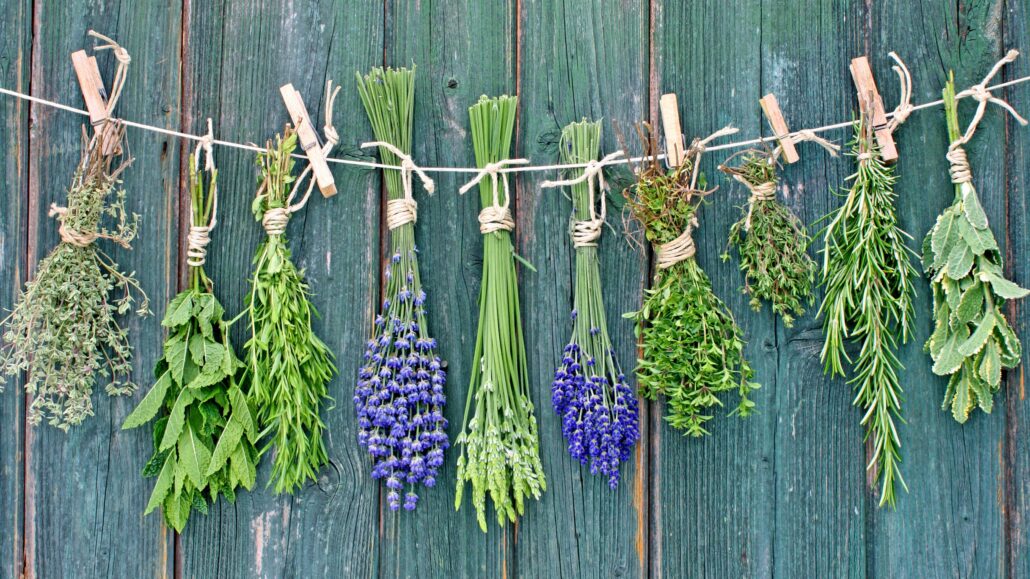Companion planting is not a new idea in the gardening world. There is evidence of farmers using these same techniques dating back to biblical times. When I think of gardening before, during, and after the time of Christ’s life, I realize just how important gardening was to biblical people. Growing healthy produce and flowers with companion plants makes for exceptional growth and nutrition.
Since people grew and preserved just about everything they ate or drank, having healthy crops was a necessity for eating well through the seasons. What they knew instinctively and what has passed down through generations is the knowledge that certain plants grown together act as helpmates. Like people, plants need good “friends,” or companions, to thrive.
Today there’s a renaissance of sorts going on with companion planting in the garden. Think of an ancient Native American technique that is gaining popularity. Corn, beans, and squash are grown together as “sisters.” Each of the sisters contributes something to the planting. As the corn grows, the beans find support by climbing up the stalk. As legumes, they fix nitrogen in the soil, and that supports the nutritional needs of corn.
The squash are quick growers, and their large leaves shade out weeds. Together, the sisters provide a balanced diet from a single planting. I learned early on that Bible herbs are good flower and vegetable companions. My mom would take a clove of garlic—a common Bible herb—and push it into the soil near the roses.
The garlic helped deter bugs. And no, the roses didn’t smell like garlic! There’s a bonus when planting Bible herbs among your garden plants. Pests find them more difficult to seek out, since the scent, color, and texture of herbs are thought to confuse them. Certain herbs attract beneficial insects to your garden, as well.
A companion planting plan integrates Mother Nature’s traits, as well as your choice of what you want to grow. Here are some of my favorite plants grown and used during biblical times and what they can do to help your garden grow better. If you have little ones in your life, have them help. They will enjoy digging up God’s good earth and learning how Bible plants make good friends in the garden.
Bay
“I have seen ruthless scoundrels, strong as flourishing cedars” (Ps 37:35).
The bay tree during biblical times was a symbol of wickedness, or, conversely, distinction, and wealth. Emperors, heroes,
doctors, and poets wore wreaths of bay laurel leaves, and triumphant athletes of ancient Greece wore crowns of bay. The Romans believed that lightning never struck the bay leaf tree and so wore crowns of its leaves as protection during thunderstorms.
Today, bay is a traditional herb to use in stocks and brines for turkey. Bay has been shown to help the body process insulin more efficiently, which leads to lower blood-sugar levels. Bay is a salt-buster, too. By adding this savory herb to food, you’ll need less salt.
Garlic
“We remember the fish we used to eat without cost in Egypt, and the cucumbers, the melons, the leeks, the onions, and the garlic” (Nm 11:5).
Garlic seems to have been almost as popular during Bible days as it is now. Both wild and cultivated varieties were eaten as a vegetable by the slaves for their strength-giving power and were also used to give foods flavor.
Garlic is good for your cardiovascular system and has antiseptic and antibiotic qualities.
Parsley
The Romans used it as a breath freshener. That’s why you still see it on your plate in restaurants today. Parsley is like a vitamin pill in a plant, containing chlorophyll, iron, calcium, and vitamin C—among other nutrients. It’s a good herb for kidney health.
When used fresh, flat-leaf or Italian parsley is generally preferred for its richer, stronger taste, versus curly parsley. However, I grew up with the curly variety and that’s still my preference. It’s an essential ingredient in the giblet stock for my gravy.
Sage
“The lampstand was made of pure beaten gold—its shaft and branches as well as its cups and knobs and petals springing directly from it. Six branches extended from its sides, three branches on one side and three on the other” (Ex 37:17-18).
Biblical scholars believe there is no doubt that sage is the herb referred to in this passage. Why? Look at the menorah—when the Judean sage plant is pressed flat, it has been likened to the seven-branched candlestick or menorah.
This type of sage grows about 3 feet tall and can still be found today in most of Israel. Sage is an outstanding memory enhancer and has anti-inflammatory and antioxidant qualities, as well. Unlike most herbs, sage has a stronger flavor fresh than dried, so use less. It’s the one herb that most of us use in the stuffing for our turkey.
Cinnamon
“The Lord said to Moses, ‘Take the finest spices: five hundred shekels of free-flowing myrrh; half that amount, that is, two hundred and fifty shekels, of fragrant cinnamon; two hundred and fifty shekels of fragrant cane’” (Ex 30:22-23).
The spices listed in this passage were used to infuse oil for anointing. Indeed, cinnamon’s history goes back before Christ was born. Actively traded a thousand years before the birth of Christ, this important spice is mentioned in many places in the Old and New Testament, from Exodus and Proverbs to the Book of Revelation.
Cinnamon’s health-giving qualities include normalizing blood sugar and helping with arthritis. I make my own blend of pumpkin pie spice, which contains cinnamon as a main ingredient.
Cloves
“Then she gave the king one hundred and twenty gold talents and a very large quantity of spices, as well as precious stones. There was no other spice like that which the queen of Sheba gave to King Solomon” (2 Chr 9:9).
Cloves were a rare spice in Bible days. In many languages, the word cloves translates as nails, and they do look like nails. Clove oil is good for toothaches and has antiseptic qualities, as well. Cloves are also included in pumpkin pie spice.
Ginger
Ancient Romans imported vast quantities of ginger and taxed it heavily because it was in such high demand. Ginger is wonderful for nausea and can help relieve muscle pain and soreness due to its anti-inflammatory qualities. Try adding some crystallized ginger to your cranberry sauce. Ginger is another ingredient in pumpkin pie spice.

Make-Ahead Turkey Gravy
This takes the stress out of having to make the gravy on Thanksgiving. Refrigerate up to three days or freeze for two months.
2 whole large turkey wings
1 large onion, unpeeled and cut into large chunks
2 quarts + 1 cup low-sodium chicken broth
1 large carrot, chopped
1 rib celery, chopped
1/2 teaspoon dried thyme
1/2 teaspoon dried sage leaves
1 bay leaf
Several sprigs parsley
3/4 cup flour
Salt and pepper
Preheat oven to 400 degrees. Arrange wings in
a single layer in a large, sprayed roasting pan.
Scatter onions over top. Roast about 1-1/2 hours
or until wings are very brown.
Put wings and onions in large pot. Add 1 cup broth to roasting pan and stir to scrape up any brown bits on the bottom. Add the brown bits to the pot.
Add 6 cups broth, carrot, celery, thyme, sage, bay, and parsley. Bring to a boil. Reduce heat and simmer uncovered for 1 hour and 20 minutes. Remove wings and save the meat for another use. Strain broth into a saucepan, pressing vegetables to extract as much liquid as possible.
Discard vegetables. Refrigerate overnight, if you have time, so that you can skim the fat off the top easily. If not, do your best to skim it after straining broth.
Whisk flour into remaining 2 cups broth until well blended. Bring broth in pot to a gentle boil. Whisk in broth/flour mixture and boil 3-4 minutes to thicken gravy and cook flour. Season to taste.
Honey Mustard Dressing
Check out the ingredient list. It also contains honey, a favored Bible food. This is a nice dressing for your holiday salad.
3 tablespoons cider vinegar or to taste 1 tablespoon very finely minced onion
3 tablespoons honey or to taste Salt and pepper to taste
6 tablespoons mayonnaise 3/4 cup canola oil
1 tablespoon Dijon mustard 2 tablespoons fresh, chopped parsley
Heat vinegar and honey together until honey dissolves. Cool and then whisk in
mayonnaise, mustard, onion, and seasonings. Slowly whisk in oil and stir in parsley.
Makes 1-1/2 cups.
Not Your Ordinary Do-Ahead Mashed Potatoes
Make up to two days ahead.
5 pounds Idaho, Russet or Yukon Gold
potatoes
1-1/2 sticks butter
8 ounces regular cream cheese, softened
1/2 to 3/4 cup half-and-half
Salt and pepper
Extra butter for top of potatoes
Chopped parsley for garnish
Peel potatoes and cut into large chunks. Put in pan with cold water to cover. Bring to a boil and cook until done.
You’ll know when you poke a fork into the potatoes and it comes out easily. Some of the potatoes will start to fall apart. That’s OK.
Drain the potatoes and put them back into the dry pot. Over low heat, mash them to allow steam to escape. Turn off the stove and add butter, cream cheese, and 1/2 cup half-and-half and mash until they’re as smooth or chunky as you like, adding more half-and-half if needed. Season to taste.
Spray a baking dish and add the potatoes. Dot with butter. Cool and refrigerate.
To Reheat in Slow Cooker:
Spray slow cooker, stir potatoes to mix in
butter, and reheat on low 2-3 hours. If necessary,
add more half-and-half.
To Reheat in Oven:
Remove potatoes from refrigerator about 3 hours before serving. Reheat in 350-degree oven, lightly tented with foil, until hot throughout, 30-40 minutes.
White & Wild Rice Dressing with Sausage, Mushrooms & Scallions
This makes a lot, so feel free to divide recipe in half. It’s a great side dish for Thanksgiving dinner if you don’t want to stuff the bird.
7-8 cups chicken broth
1 cup uncooked wild rice
3 cups uncooked converted rice
4 tablespoons butter or substitute
2 cups chopped celery
2 generous cups chopped onion
2-3 teaspoons minced garlic
1 pound Italian sausage
8 ounces mixed mushrooms, your choice, sliced
if necessary
1/2 to 1 teaspoon each dried sage, rosemary, and
dried thyme
Handful of fresh parsley, chopped
Salt and pepper to taste
1 bunch green onions, sliced, both leaves and
white part
Bring 7 cups broth to a boil. Add wild rice, cover, and cook 15 minutes. Add white rice and continue to cook 20 more minutes, or until rice is done. If necessary, add a bit more broth while rice is cooking.
Meanwhile, sauté onions, celery, and garlic in butter, just until crisp tender. Add sausage, mushrooms, sage, rosemary, and thyme, breaking up sausage with a potato masher. Cook until sausage is done. Drain any grease.
Combine sausage mixture with rice. Add parsley and blend well. Season to taste and add salt and pepper. Serve with green onions sprinkled on top. Serves 10-12.
Roasted Sweet Potatoes with Garlic and Thyme
4 medium sweet potatoes, peeled and cut into 1-1/2-inch rounds
1/4 cup extra virgin olive oil
1 tablespoon fresh thyme leaves or 1 teaspoon dried
2 teaspoons garlic, minced
1/4 to 1/2 teaspoon crushed red pepper flakes (optional)
Salt to taste
Preheat oven to 375-400 degrees.
Toss potatoes with oil, thyme, garlic, red pepper, and salt. Make a single layer on baking sheet. Roast, uncovered, until tender and starting to brown, about 45 minutes.
Rita’s Pumpkin Pie
Use pumpkin puree and not pumpkin pie filling, which has sugar and seasonings in it. The pumpkin pie spice will contain cloves, as well as cinnamon and ginger—all Bible spices. Make this a day ahead. Cool completely before refrigerating.
1 15-ounce can pumpkin puree
1 12-ounce can evaporated milk
3/4 cup sugar
2-3 teaspoons pumpkin pie spice
1/2 teaspoon cinnamon or to taste
Several dashes salt
2 large eggs, slightly beaten
Whisk pumpkin, milk, sugar, and spices together. Taste and add more pumpkin pie spice and cinnamon, if you want. Add salt and eggs and blend. Pour into pastry-lined pan.
Bake at 425 degrees for 15 minutes; lower temperature to 350 degrees and bake 35 minutes or until almost set in middle. Cool and refrigerate up to a day.









1 thought on “Flavors of the Bible”
Very interesting to read